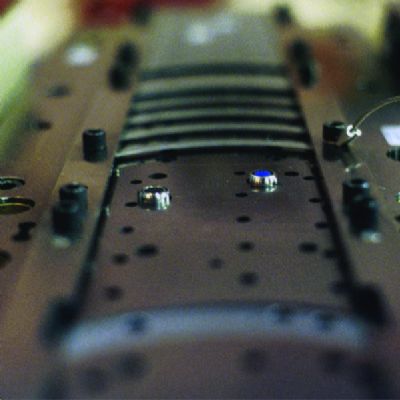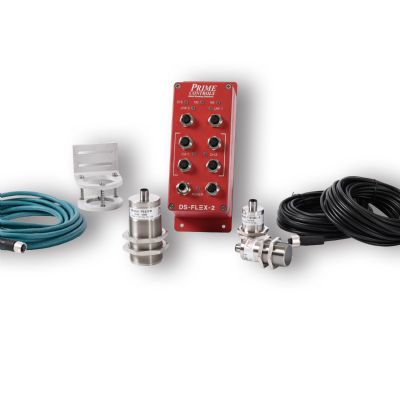Sensor Fundamentals, Part 2—Motion
July 1, 2010Comments
Moving targets can be ideal candidates for sensing, but at a price. One has to carefully test the effects of a target’s motion on a sensor’s ability to detect. Examples of moving targets include the detection of die-exiting parts, broken punches and early feed where one looks for the starting motion of a strip during the early portion of its feed cycle. Even if the press strokes at a slow speed, it is possible for the target motion to be very fast. For example, consider a returning rod in an air cylinder that is buried deep within a die. It is paramount that, whenever possible, a bench test be performed to verify that the sensor can actually detect a given moving target.
One to do this is by having a functioning die-protection controller available on a test bench. The resolver of this system is attached to a variable-speed motor so that all of the shop’s press speeds can be simulated. Several companies have such a setup so that their sensor-applications specialist can test the response time of the sensor and controller with a moving target. For example, you may have an application where the die will run at 40 strokes/min. with an assembly operation. Let’s say that at 100 deg. of the press crankshaft an air cylinder needs to extend and present a tool in the assembly area and then withdraw it after the die bottoms out and is open. Perhaps this is a hardware-insertion operation, or maybe a portion of an in-die welding process where the hardware being welded is placed in position. Obviously it would be important to verify that the air cylinder extends and retracts within a given timing window.
The simulation would involve setting up the actual air cylinder on the test bench and activating it with the programmable cam portion of the die-protection controller and perhaps a solid-state relay to handle the necessary voltage and current for the air cylinder’s solenoid. Two sensors would be fixtured to create two signals—one for the proper extension of the air cylinder’s rod and the other for its retraction. These two sensors would connect to two die-protection inputs on the controller and the appropriate timing windows for each input will have been programmed. These angles would represent the actual expected timing for the extension and retraction of the rod. The variable-speed motor attached to the controller’s resolver would be gradually increased in speed until it reaches the actual speed that the die will be running, in strokes/min. If all works as planned, one should see the air cylinder’s rod extending and retracting and the display on the die-protection controller, clearly showing the cycling of the sensors and the actual crank angles at which the events are taking place.
In terms of the sensor itself, the critical number is its response time. This is clearly stated in the specifications for the sensor.
Another to perform the simulation is to activate the air cylinder with a signal generator capable of outputs that match the press speeds on the shop floor. The generator’s output would trigger a solid-state relay that in turn would activate the air cylinder’s solenoid.
If such a signal generator is not available, then another possibility would be to use a cam attached to a variable speed motor. The lobe of the cam would be monitored by a proximity sensor, which in turn would activate the solid-state relay. The outputs of the two sensors monitoring the air cylinder’s extending and retracting rod would be connected to an oscilloscope. This scope would display the on/off activities of the sensors and make their responses obvious to the experimenter. In a later column we will explore the oscilloscope in detail and its applications to in-die sensing.
Basically, when timing is critical and doubts arise as to the ability of a given sensor to detect a moving target, a bench test is warranted. The extra time that such a bench experiment requires is nothing compared to discovering that one’s assumptions about the response time of a sensor are incorrect.
There is nothing more tragic than a sensor buried deep within a die, blind to a target that is in motion. This is particularly true if such a discovery is made when the die is ready for its first production run. MF
Technologies: Sensing/Electronics/IOT
Comments
Must be logged in to post a comment. Sign in or Create an Account
There are no comments posted. Sensing/Electronics/IOT
Sensing/Electronics/IOTEliminating Pressroom Waste—One Walk at a Time
Manuel Resendes June 10, 2025
Industry 4.0 Applications in the Sheet Metal Forming Industr...
Eren Billur March 27, 2025








